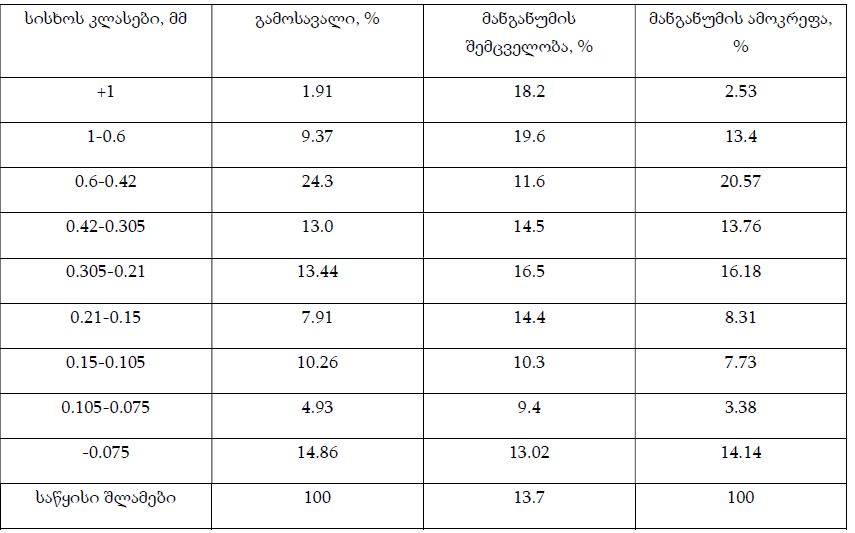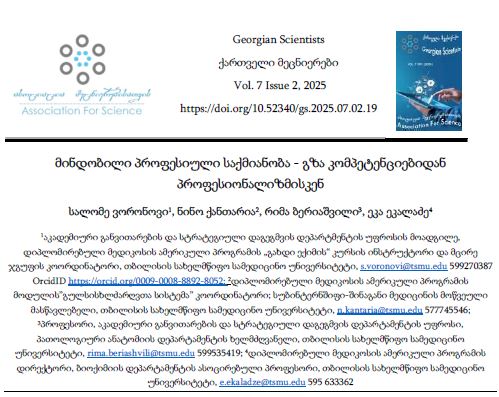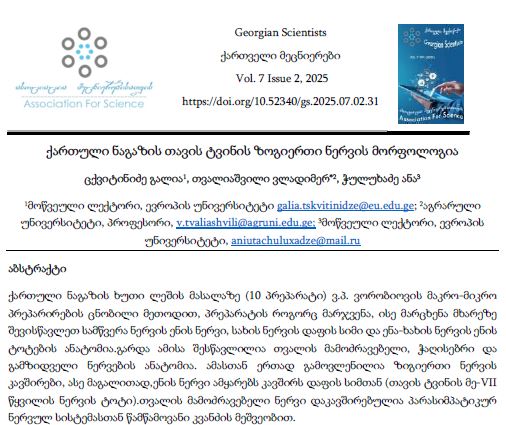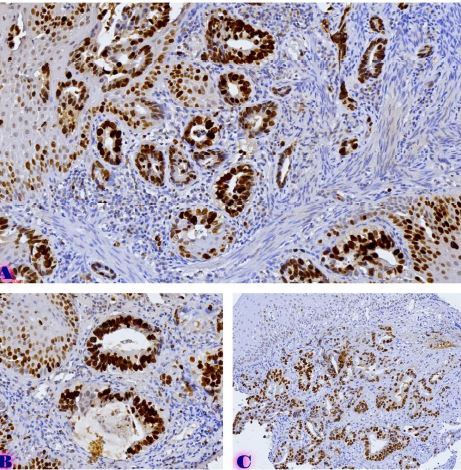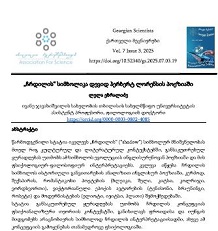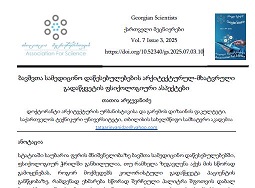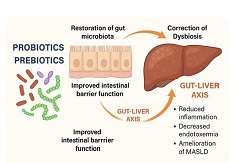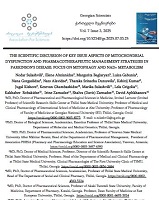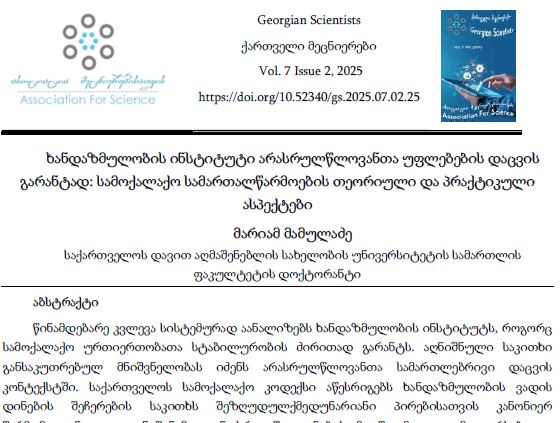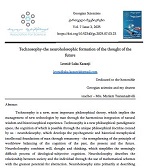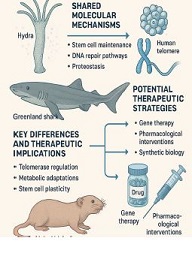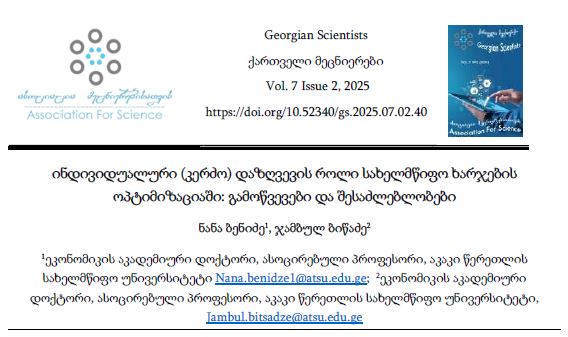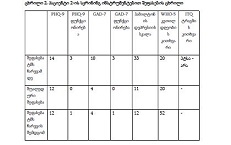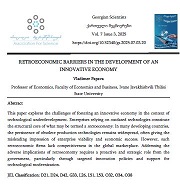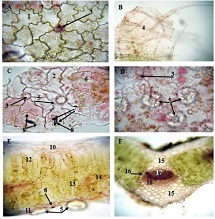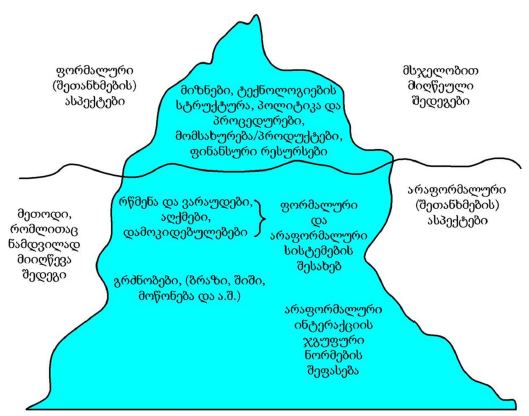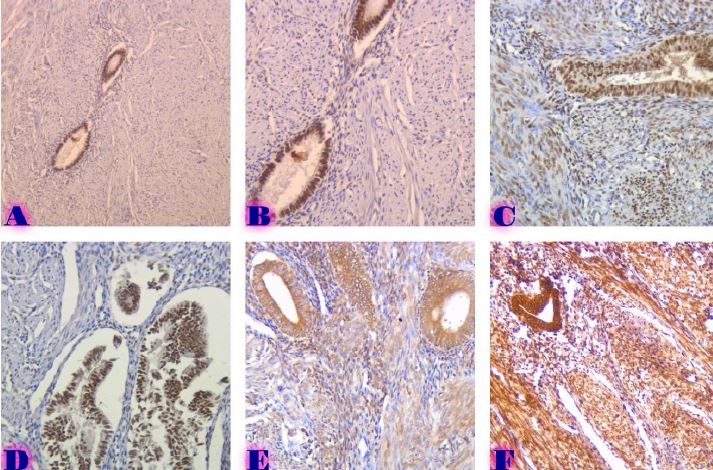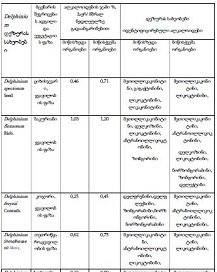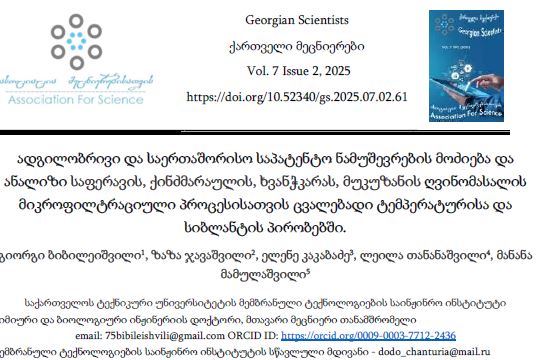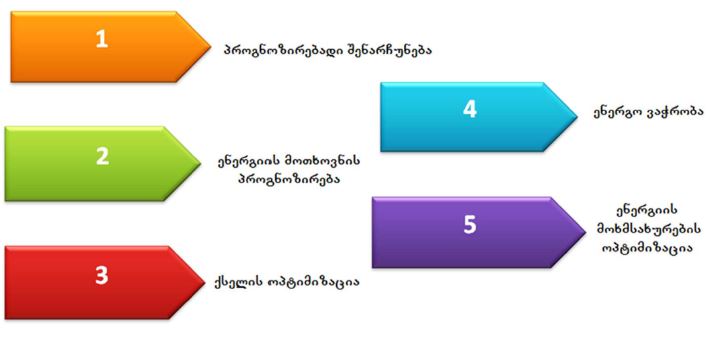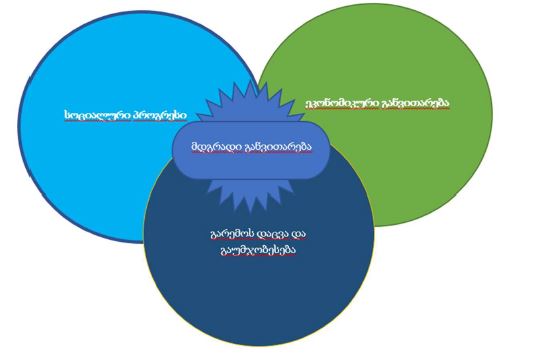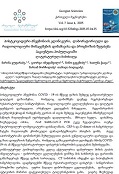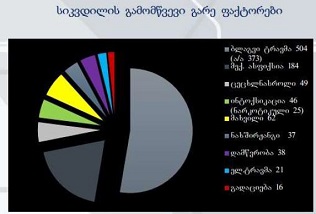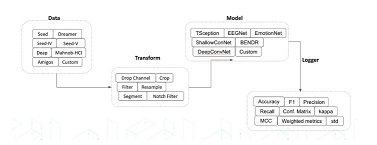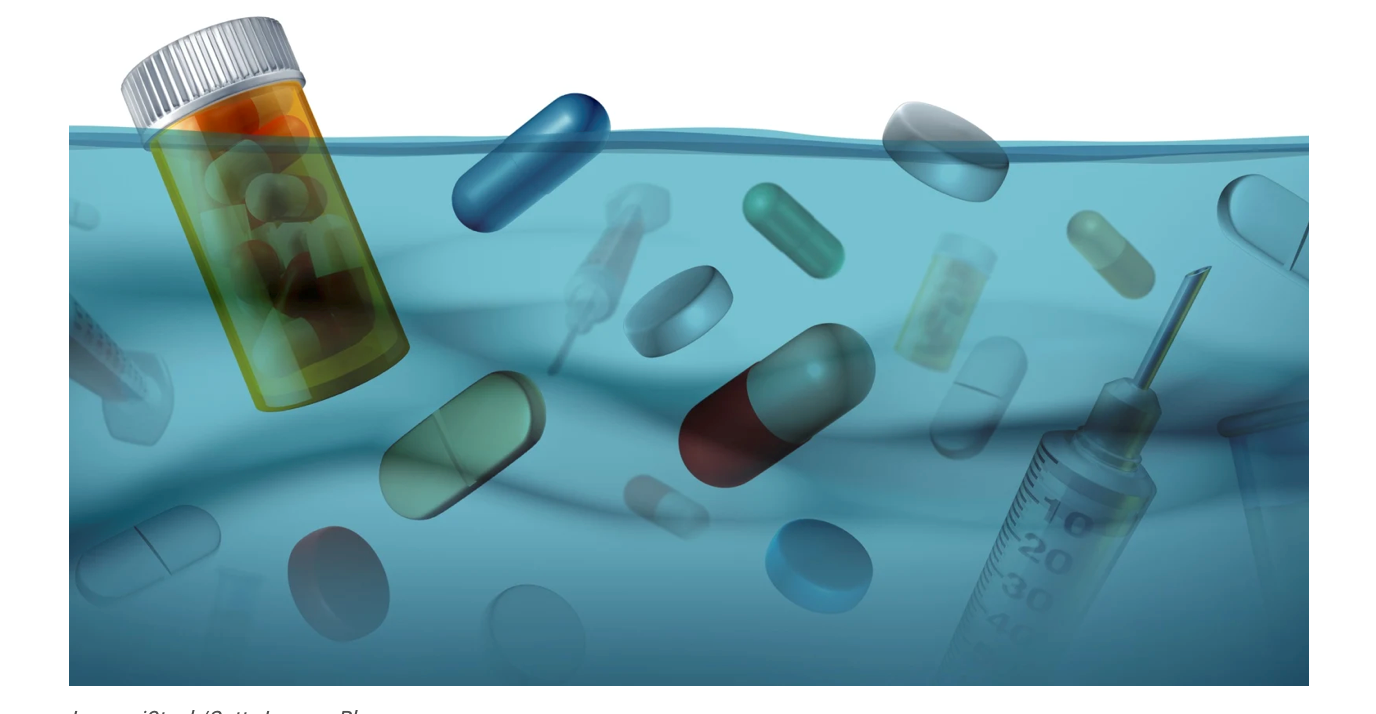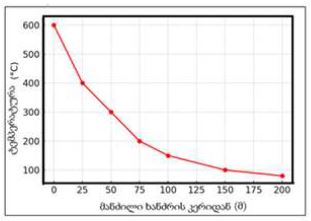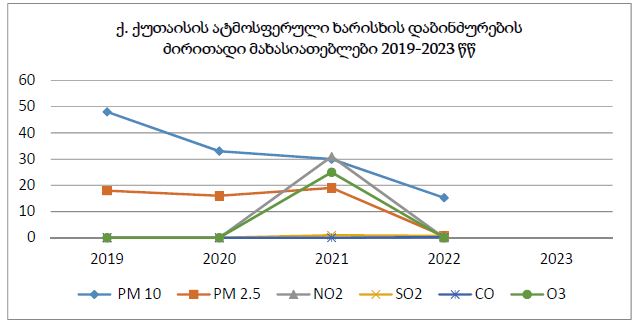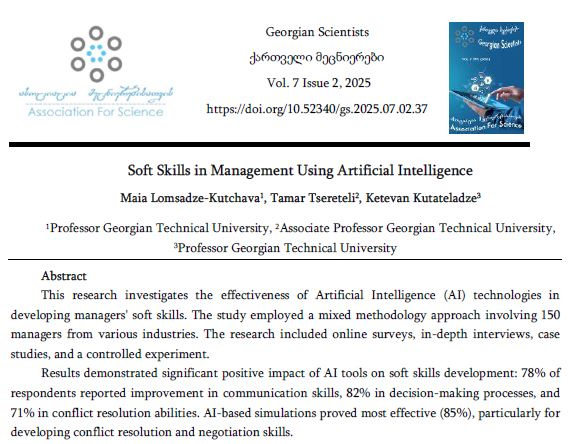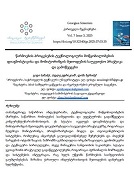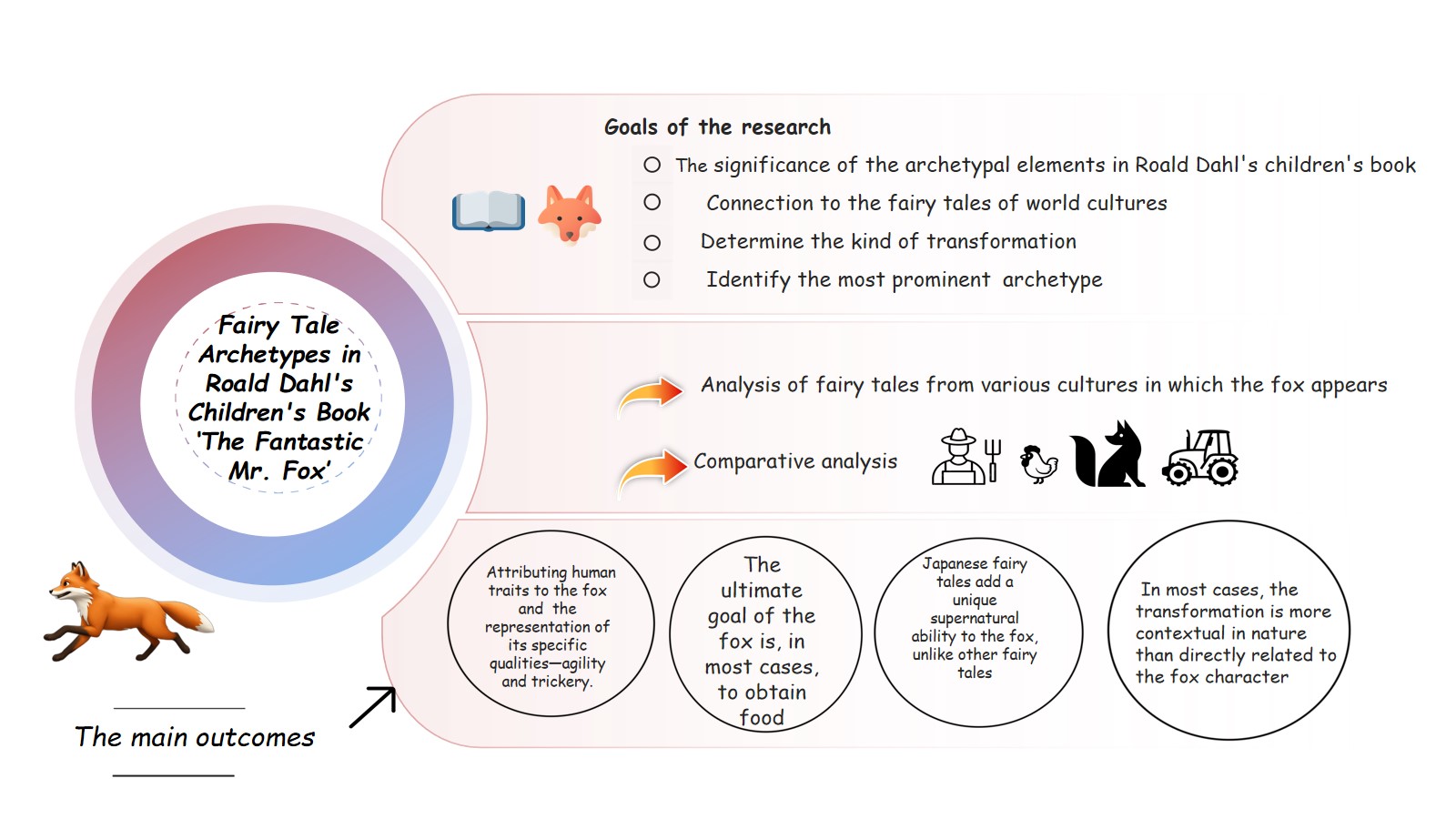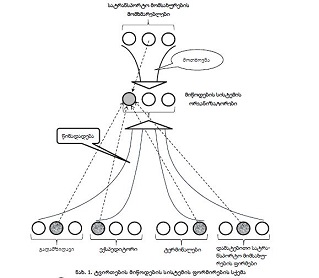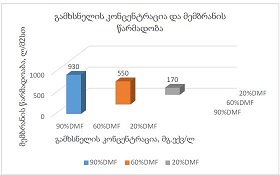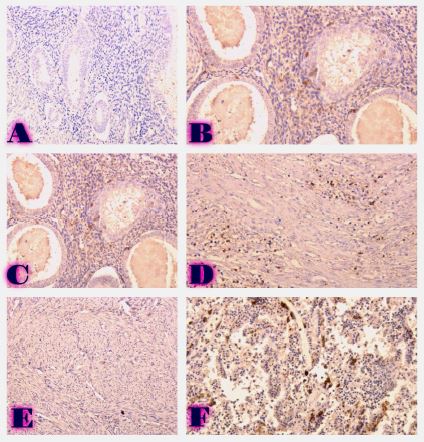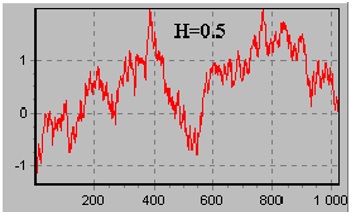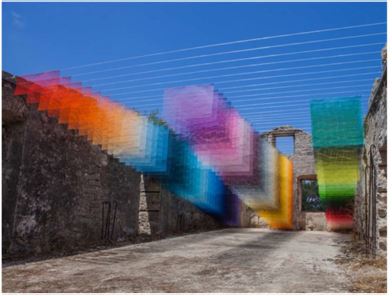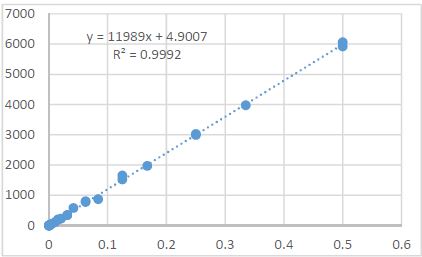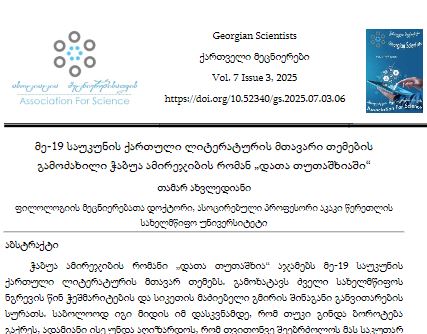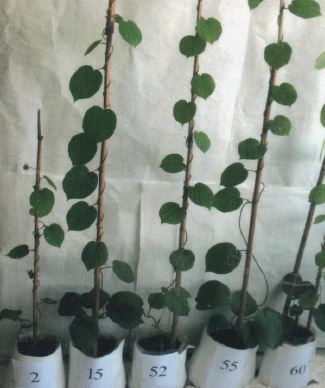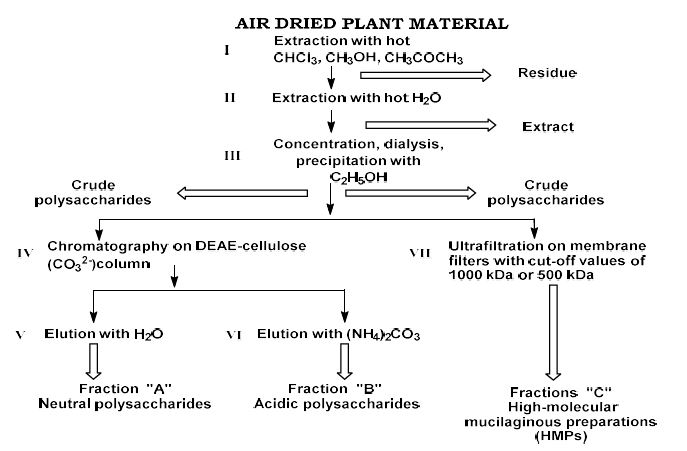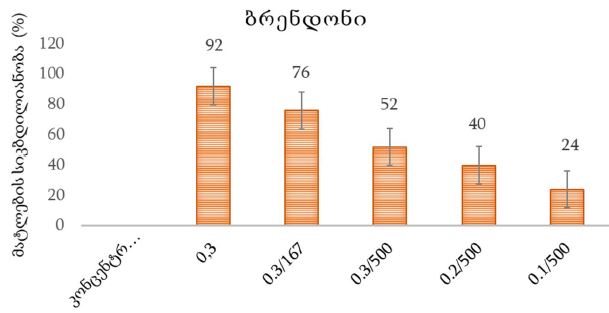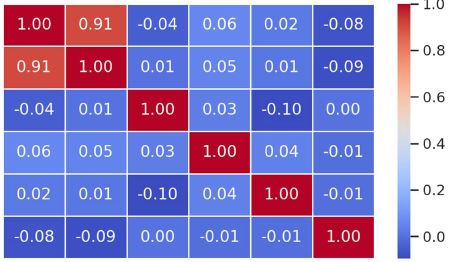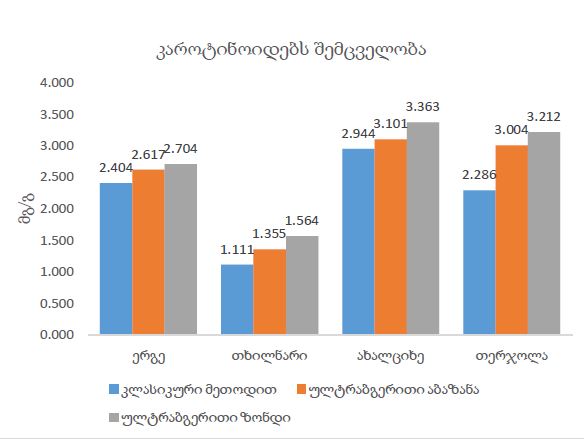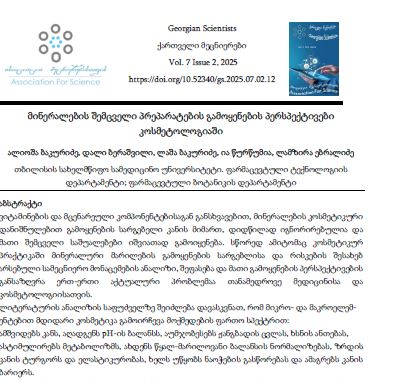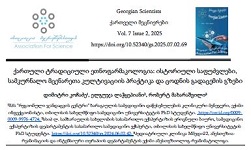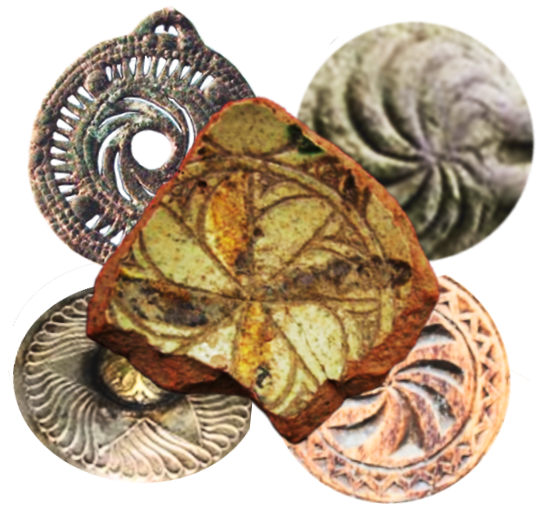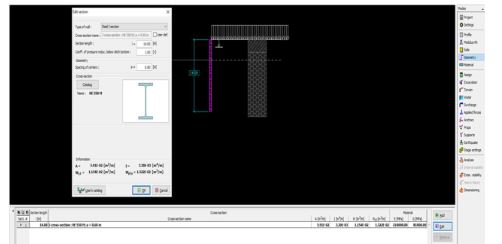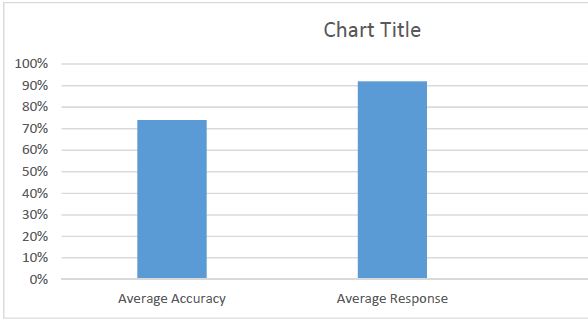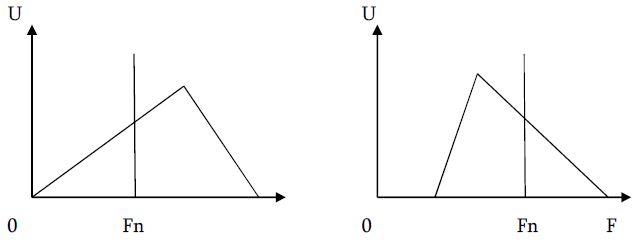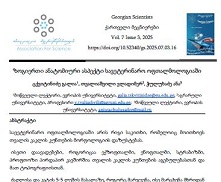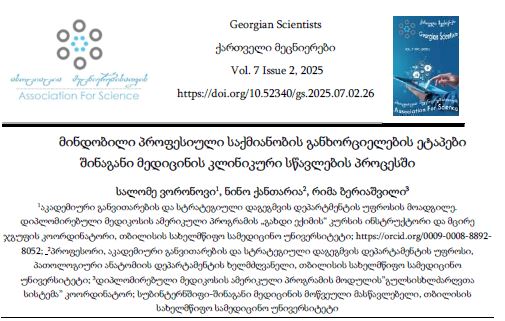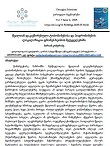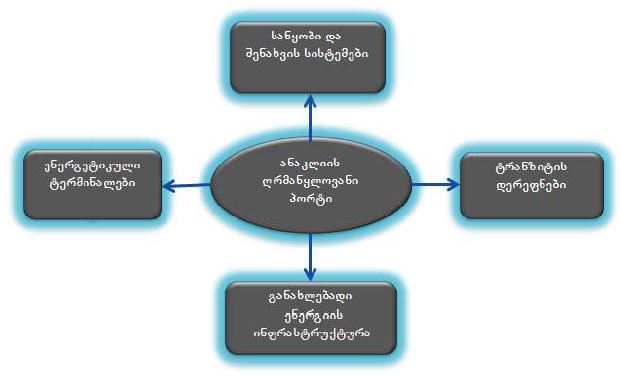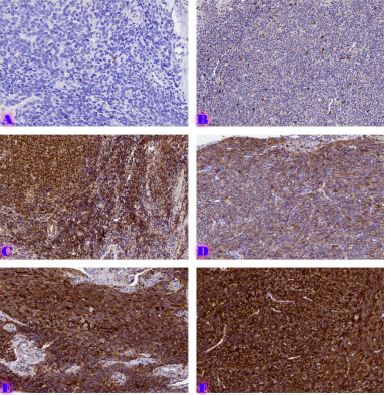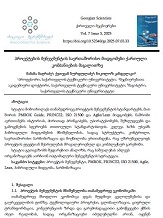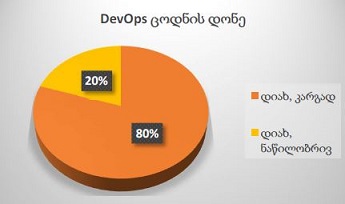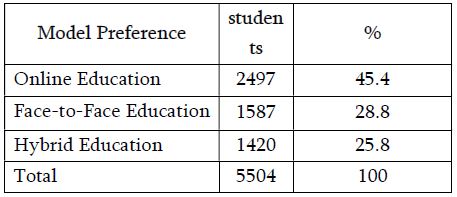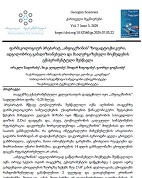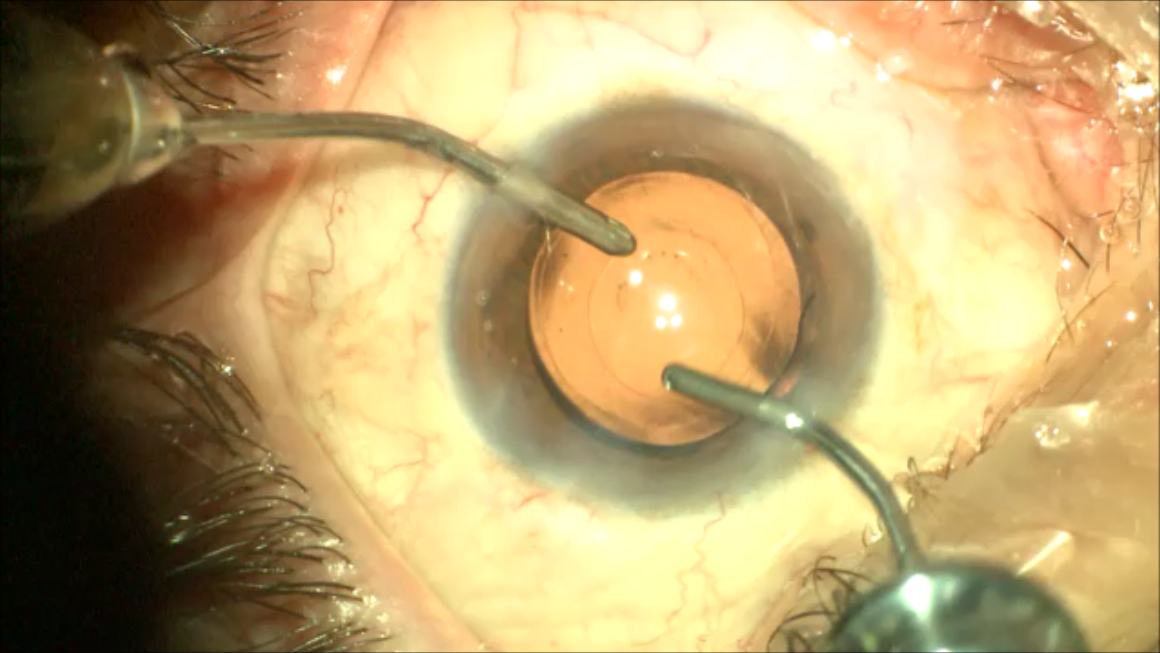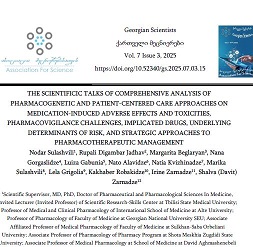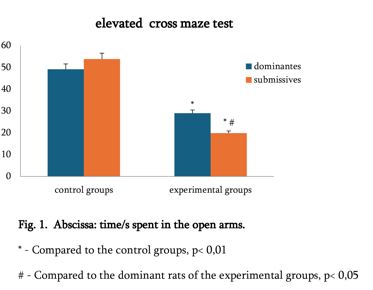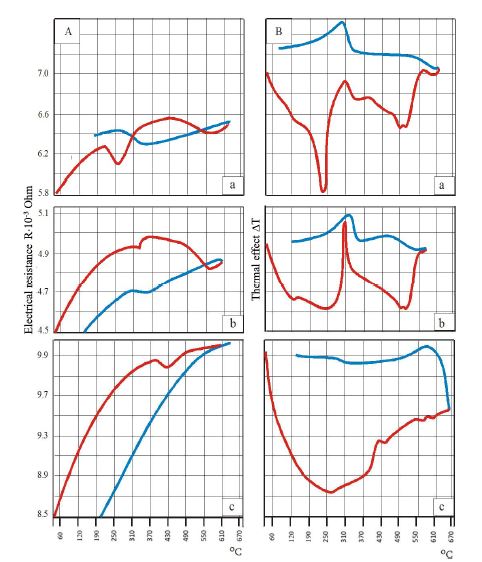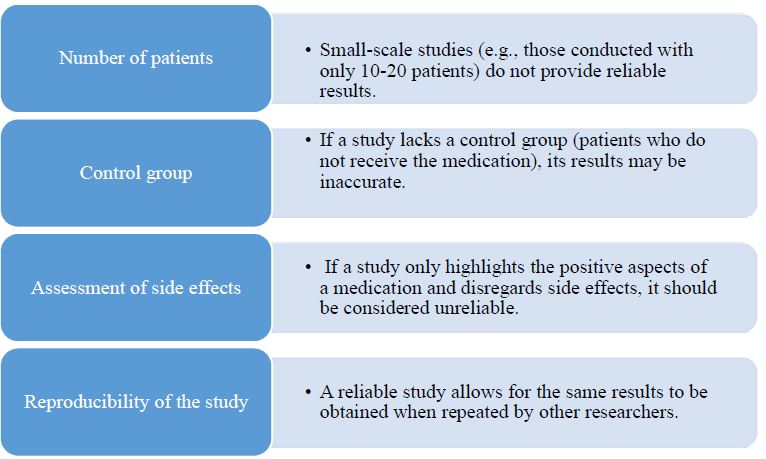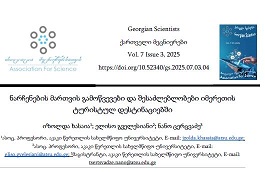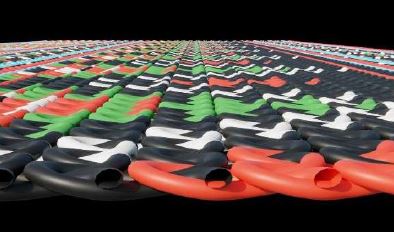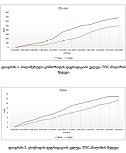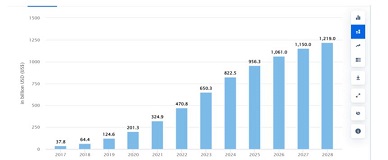Development of a formula for a cosmetic day cream using by-products of oil production from the petals of Rosa x damascena, which grows in Georgia
Downloads
One of the main means of daily facial skin care is a day cream. Based on the climatic conditions of Georgia and the specific conditions for its use, it must perform a number of functions.It must be a protective filter during sun exposure, solve specific skin problems –secure its nutrition, reduce skin dryness and dehydration when in open space, reduce the likelihood of skin irritation, reduce the number of wrinkles and fine lines, help to smooth them out, have antioxidant activity. In this regard, in the development of the cream formulation in its composition were used substances with specific activity, both organic and inorganic - by-products of the oil production from Rosa x damascena, which grows in Georgia, vegetable oils and extracts having UV protective activity and exhibiting antioxidant properties, inorganic substances, capable to counteract solar radiation by absorbing, reflecting or scattering it, and a number of other substances. Based on the data of the spectrophotometric study, the resulting cream exhibits protective activity against solar radiation in the region of 180-1000 nm.
Downloads
Metrics
D. Vlahova-Vangelova, S.Dragoev, D., Balev, D., Bozhilov, D. Dagnon, and others. Valorization of waste by-products of rose oil production as feedstuff phytonutrients. Bulg. J. Agric. Sci., 2021, 27(1), pр. 209–219.
Anton Slavov, Petko Denev, Ivan Panchev, Vasil Shikov and others. Combined recovery of polysaccharides and polyphenols from Rosa damascena wastes.Industrial Crops and Products. 2017, vol. 100, pр. 85-94.
Almira Georgieva, Yana Ilieva, Zlatina Kokanova-Nedialkova, Maya Margaritova and others. Redox ability and antitumor activity of wastewater obtained from the distillation of essential oils of four Bulgarian oil-bearing roses. Antioxidants 2021, 10(10), pр.1615-1621.
Timchuk, T. Zheleznyak, 3. Vornik. Engineering technologies and systems. 2008, 18, 2, pp. 146-147.
Sabahi, Fatemeh Farmani, Elham Mousavinoor, Mahmoodreza Moein. Valorization of Waste Water of Rosa damascena Oil Distillation Process by Ion Exchange Chromatography. 2020, |Article ID 5409493 | https://doi.org/10.1155/2020/5409493.
Esra Capanoglu, Elifsu Nemli, Francisco Tomas-Barberan. Novel Approaches in the Valorization of Agricultural Wastes and Their Applications J. Agric. Food Chem. 2022, 70, 23, pp. 6787–6804.
A. Slavov, I. Vasileva, L. Stefanov, and A. Stoyanova. Valorization of wastes from the rose oil industry. Reviews in Environmental Science and Bio/Technology. 2017, vol. 16, no. 2, pp. 309–325.
D'Amato S., Serio A., Chavez Lopez S., Paparella A. Hydrosols: Biological activity and potential as food antimicrobials. Food control. 2018, 86, pp. 126–137.
Aruna Gupta, B. K. Kapahi, Baleshwar Meena. Chemical Composition of Rose Water Volatiles.Journal of Essential Oil Research. 2005, 17(3), рр. 265-267.
Mahmoodreza Moein. Chemical composition analysis of rose water samples from Iran. Pharmaceutical Biology. 2014, vol. 52, рр.1358-1361.
Burch-Machin M.A., Bowman A. Oxidative stress and aging. Br. J. Dermatol. 2016,175, рр. 26–29.
Karen Mulkijanyan, Natela Gogitidze, Marine Sulakvelidze, Nadezhda Mushkiashvili, Zhana Novikova, Lasha Mskhiladze. Pharmacological assessment of the aqueous extract of rose oil waste from Rosa x damascena Herrm cultivated in Georgia. World Journal of Biology Pharmacy and Health Sciences, 2021, 07(01), рр. 001-008.
Maru GB., Gandhi K., Ramchandani A., Kumar G. (2014). The role of inflammation in the development of skin cancer. Add. Exp. Honey. biol. 2014, 816, рр. 437–469.
AleksandraTuchowska, Katarzyna Janda-Milczarek. Plant hydrolates – Antioxidant properties, chemical composition and potential applications .Biomedicine & Pharmacotherapy. 2021,vol. 142.112023.
Romain Duroux, Anne Mandeau, Gaelle Guiraudie-Capraz, Yannick Quesnel, Estelle Loing. A Rose Extract Protects the Skin against Stress Mediators: A Potential Role of Olfactory Receptors. Molecules 2020, 25(20), рр. 4743-4748.
Myunghee Lee, Tae Gyu Nam, Inil Lee, Eun Ju Shin, Ahram Han, and others. Skin anti in flammatory activity of rose petal extract (Rosa gallica) through reduction of MAPK signaling pathway
Food Sci Nutr. 2018 Nov; 6(8), 2560–2567.
Kovtun V.M. Study of tea waste and Rose flower meal and creation of a complex preparation based on them. Dissertations…. cand. farm. Sciences. Pyatigorsk.1975.
Yun-yuWang, Zhe Bai, Fang-fengMeng, Yue-fengBi, and others. Antioxidation and active constituents’ analysis of flower residue of Rosa damascena. Chinese Herbal Medicines . 2020,vol. 12, Issue 3, рр. 336-341.
B. C. Armstrong, A. E Kast. Sun Exposure and Skin Cancer, and the Mystery of Skin Melanoma. Cancer Epidemiology. 2017. vol. 48. рр. 147–156
E. Craythorne, F. Al-Niamy. Skin Cancer. Medicine (Baltimore), 2017, 45, pp. 431–434.
B. Manaya, R.K.K. Kaminsky, M.A. Correa, L.A. Chiavacchi. Inorganic UV filters. Braz.J. Pharm. Scientific. 2013. vol. 49. рр. 201–209.
State Pharmacopoeia of Georgia. Tbilisi 2003. "Ointments", vol. 2, рр. 71-74.
GOST 31460-2012. "Cosmetic creams" General specifications.
GOST 31679-2012. "Liquid cosmetic products" General specifications.
H.A.E. Benson, M.S. Roberts, V.R. Leite-Silva, K. WALTERS. Cosmetic Formulation: Principles and Practice, 1st ed., Florida: CRC Press, 2019, p. 498.
Ali Fadi Ahmad. Development and biopharmaceutical evaluation of topical anti-inflammatory formulations of tenoxicam and naproxen. Diss. cand. pharmaceutical Sciences, Moscow 2011.
M.S Makieva, Yu.A. Morozov. Determination of the osmotic activity of creams by diffusion through a semi-permeable membrane. Pharmacy and pharmacology. 2014, 6 (7), pp. 42-47.
Lucas Almeida Rigo ,Julia Weber, Cristiane Bona , SilvaRuy Carlos R Beck. Evaluation of the Spreadability of Pharmaceutical or Cosmetic Semisolid Formulations Using Scanned Images. Latin American journalof pharmacy. 2012, 31(10), pр.1387-1391.

This work is licensed under a Creative Commons Attribution-NonCommercial-NoDerivatives 4.0 International License.







